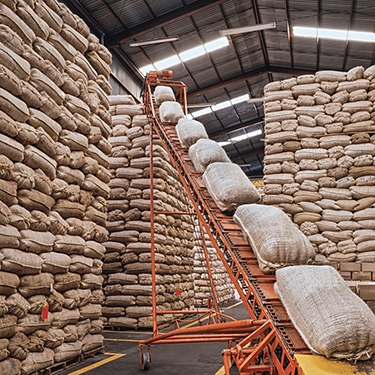Infrastructure investment due diligence

On behalf of a Canadian oilseed processer WPI's team provided market analysis, econometric modeling and financial due diligence in support of a $24 million-dollar investment in a Ukrainian crush plant. Consistent with WPI's findings, local production to supply the plant and the facility's output have expanded exponentially since the investment. WPI has conducted parallel work on behalf of U.S., South American and European clients, both private and public, in the agri-food space.

 Mediterranean/Middle East/North Africa/Africa – MEA Region Morocco has established its soft wheat import rebate program for 1 January to 30 April 2026. The actual amount of the import rebate is calculated on the average landed cost versus the government set reference price based on inform...
Mediterranean/Middle East/North Africa/Africa – MEA Region Morocco has established its soft wheat import rebate program for 1 January to 30 April 2026. The actual amount of the import rebate is calculated on the average landed cost versus the government set reference price based on inform...
 Ag markets were higher with support coming from a rally in crude oil and broader energy markets after the U.S. removed Venezuela’s president from power over the weekend. The move has direct bullish implications for crude oil supplies in the near term, which should help broader commodity m...
Ag markets were higher with support coming from a rally in crude oil and broader energy markets after the U.S. removed Venezuela’s president from power over the weekend. The move has direct bullish implications for crude oil supplies in the near term, which should help broader commodity m...
 Grains and oilseeds nearly all traded lower to start the week with profit taking driving most of the action as the CBOT enters another holiday-shortened week. The only market to finish higher was soyoil, where a geopolitical tension driving bounce in crude oil helped support the vegoil. Improve...
Grains and oilseeds nearly all traded lower to start the week with profit taking driving most of the action as the CBOT enters another holiday-shortened week. The only market to finish higher was soyoil, where a geopolitical tension driving bounce in crude oil helped support the vegoil. Improve...
 WPI Grain Prices and Freight Rate App Note: you can also visit the app directly by clicking here. Supplemental Information The section below offers a concise view of the options available in the current version of the WPI FOB Price and Freight Rate app, along with a short “How To”...
WPI Grain Prices and Freight Rate App Note: you can also visit the app directly by clicking here. Supplemental Information The section below offers a concise view of the options available in the current version of the WPI FOB Price and Freight Rate app, along with a short “How To”...